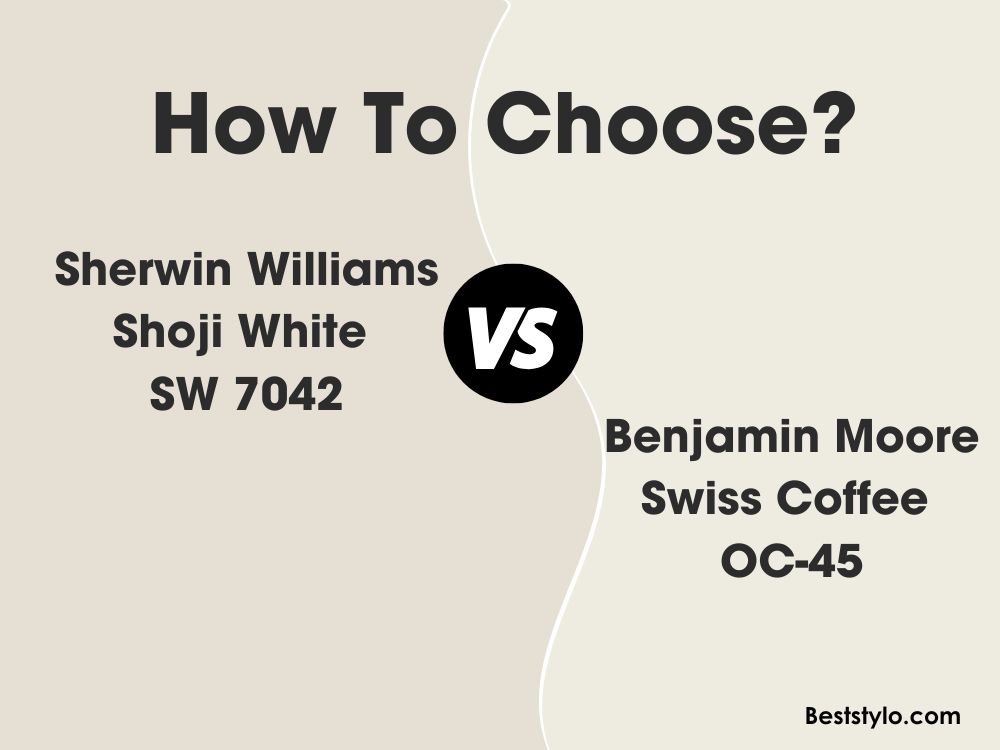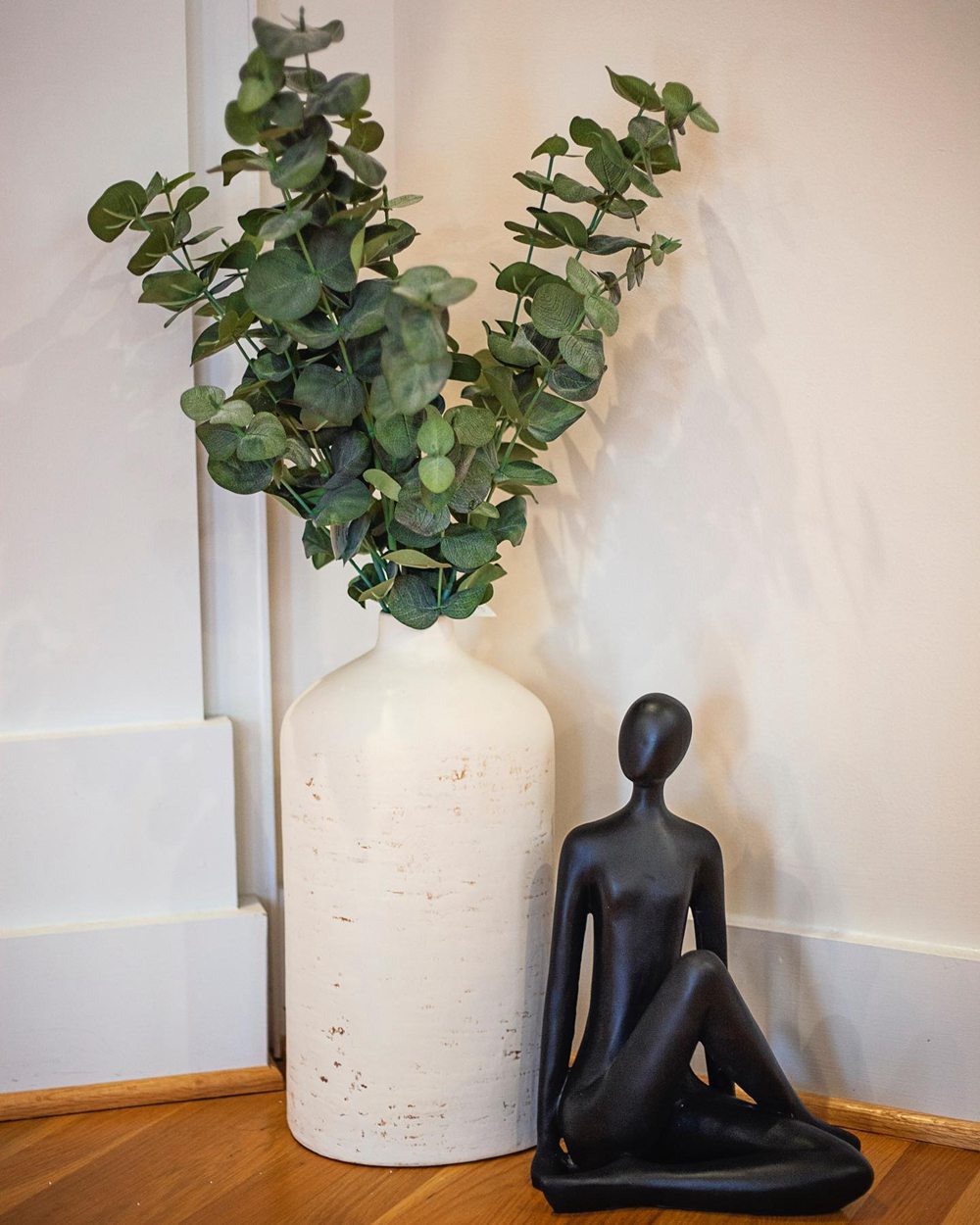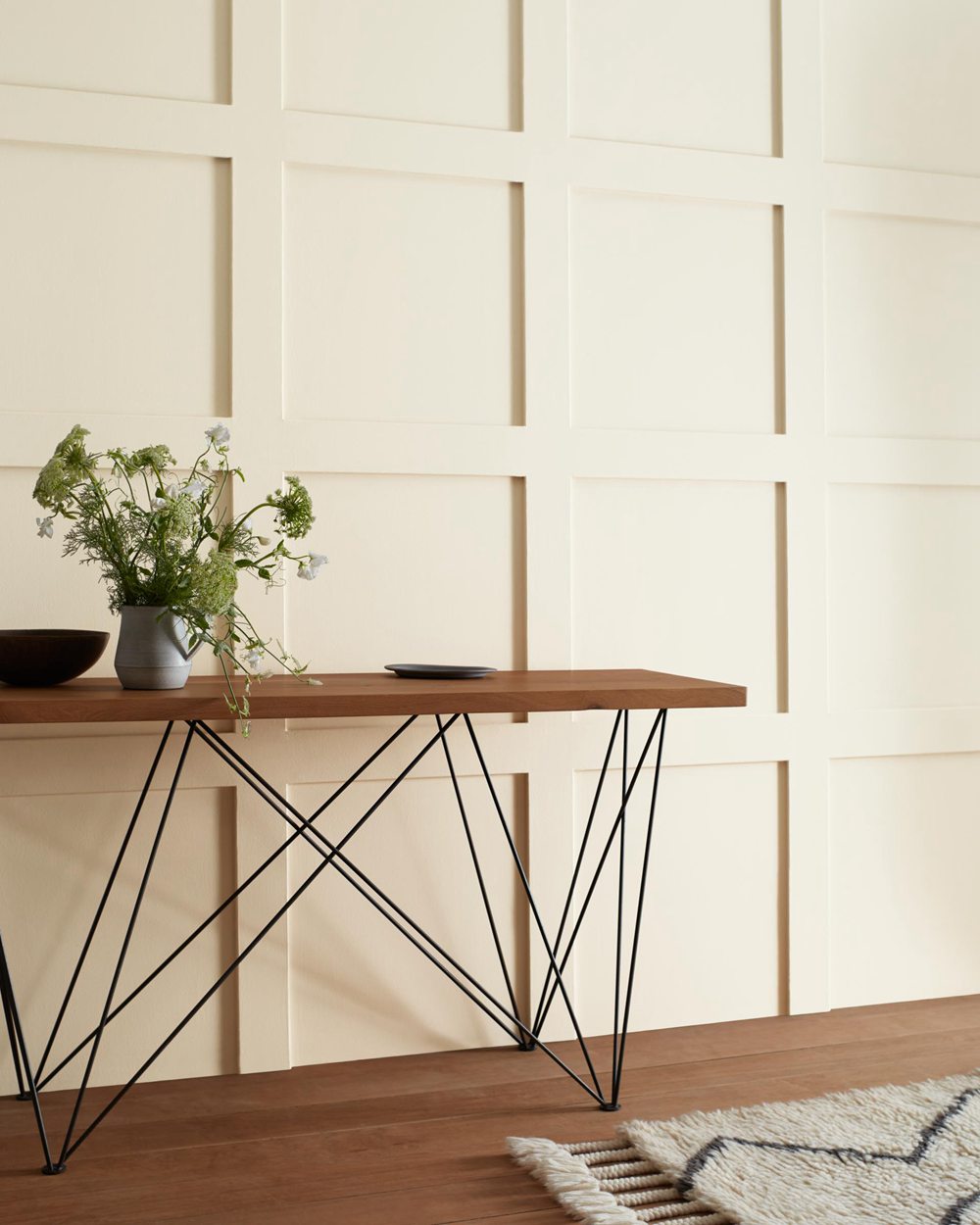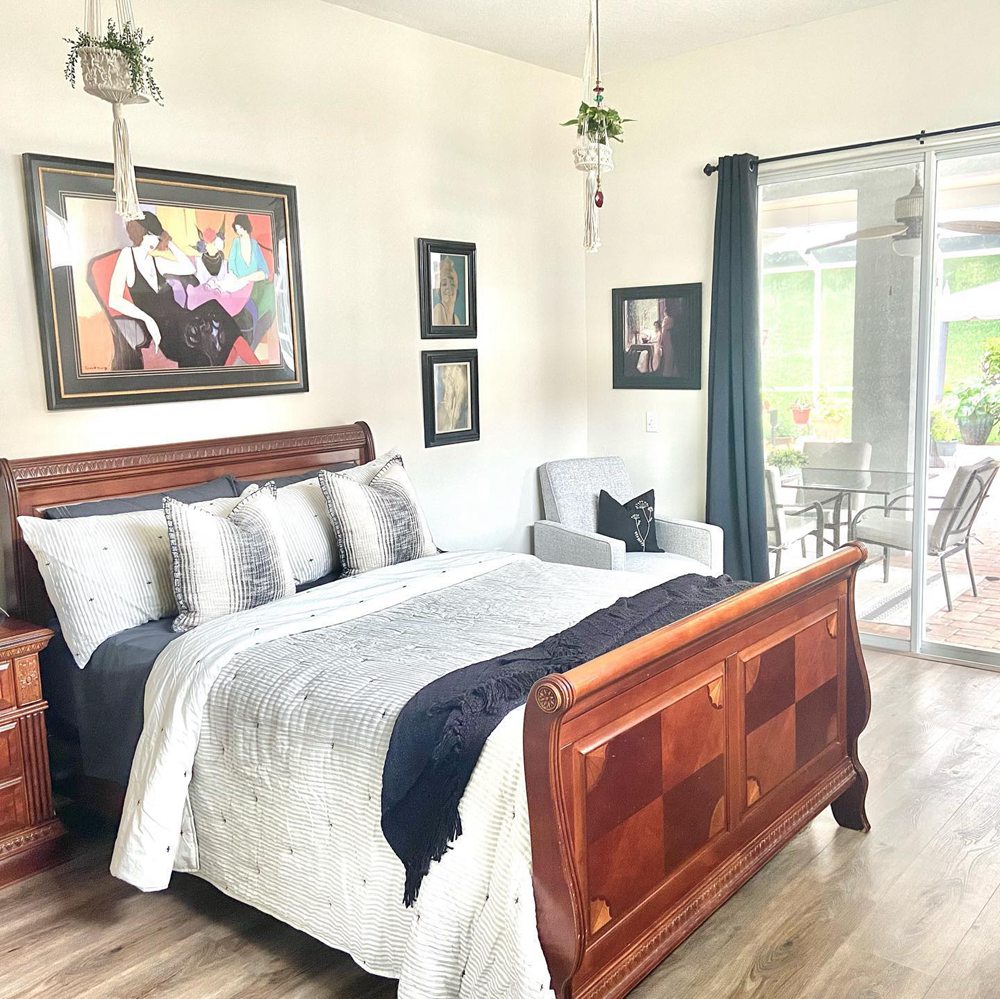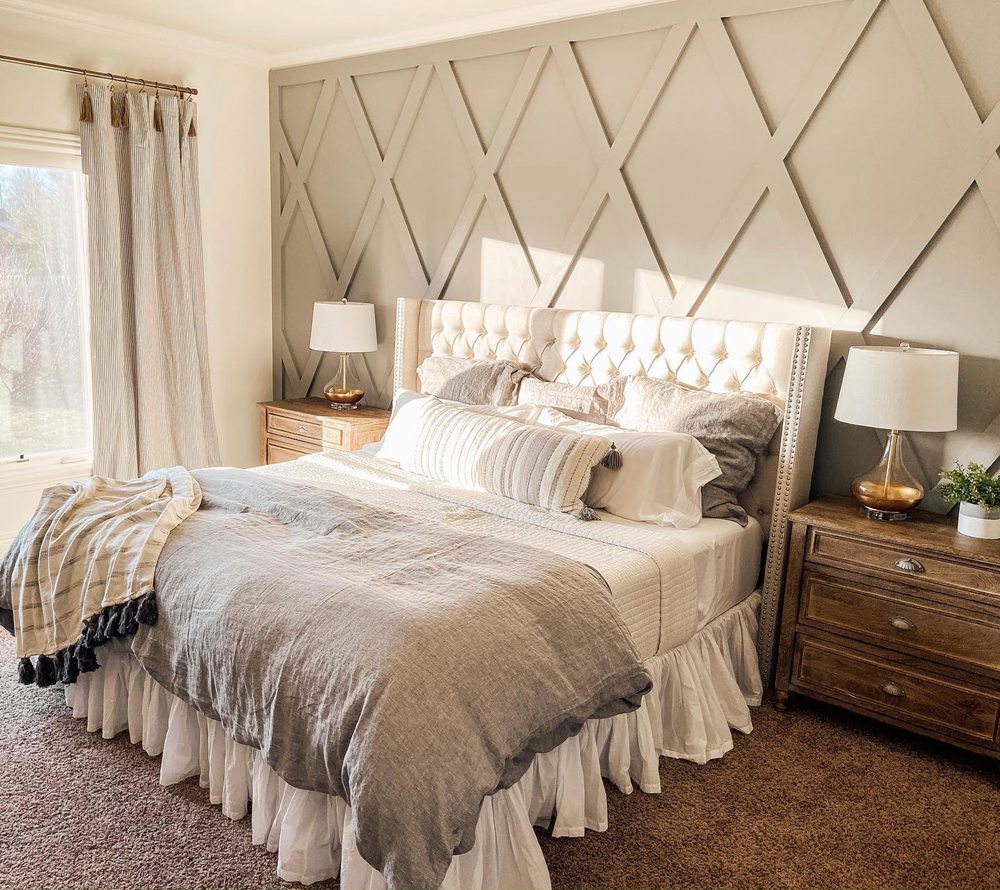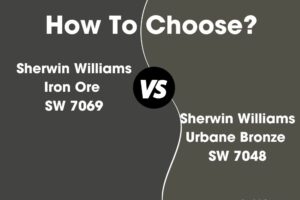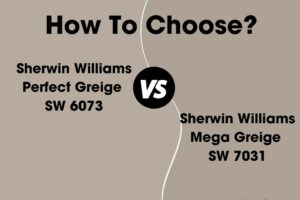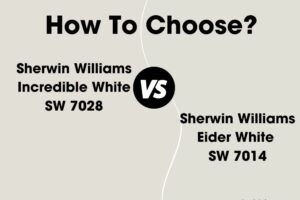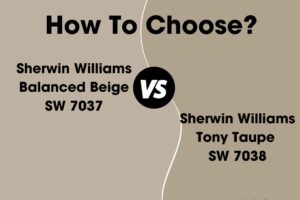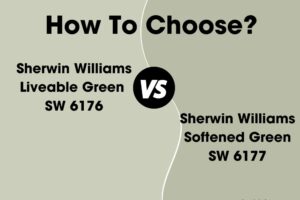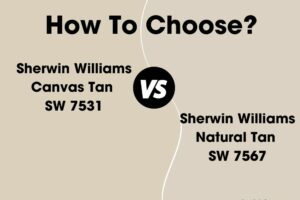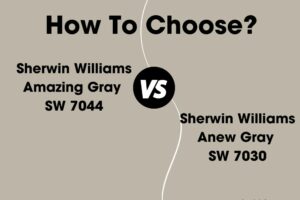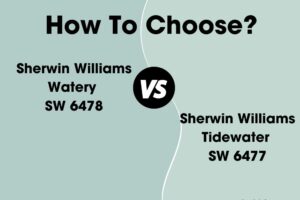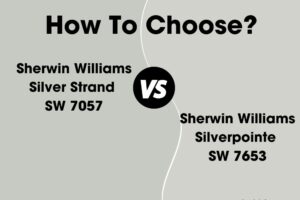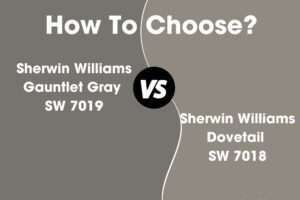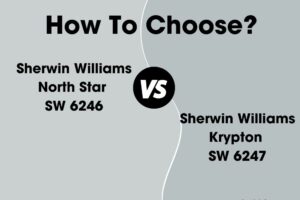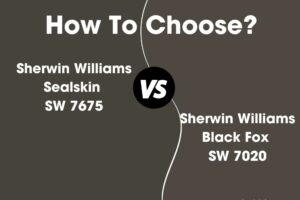When selecting a warm, versatile neutral paint color, popular picks across brands include Sherwin-Williams Shoji White SW 7042 and Benjamin Moore Swiss Coffee OC-45. Both are beautiful light tan browns that work well throughout homes. But what exactly sets these two apart?
In this article, we’ll thoroughly compare Shoji White and Swiss Coffee. We’ll analyze undertones, light reflectance, real life photos, and best room usages. Read on to determine which warm neutral is the right fit for your home’s interior design needs.
Table of Contents
Key Differences Between Shoji White and Swiss Coffee
Before diving into the details, here is an overview of the main differences between Shoji White and Swiss Coffee:
- Undertones – Shoji White is more gray, Swiss Coffee is more brown
- Light Reflectance – Shoji White has an LRV of 74, Swiss Coffee has an LRV of 81.91
- Use – Shoji White for modern homes, Swiss Coffee for traditional decor
- Rooms – Shoji White shines in bright rooms, Swiss Coffee excels in cozy spaces
- Availability – Swiss Coffee comes in more finishes
Now let’s explore Shoji White and Swiss Coffee more thoroughly.
Sherwin-Williams Shoji White SW 7042
Sherwin-Williams Shoji White SW 7042 is a gorgeous light tan neutral with subtle gray undertones. This versatile color works beautifully across design styles.
Here are some details on Shoji White:
- LRV: 74
- Undertones: Gray beige
- Finish: Available in all paint sheens
- Rooms: Living rooms, bedrooms, offices
- Pairs Well With: Grays, blues, greens
Shoji White has barely noticeable gray-beige undertones that give this light brown a refined sensibility. While called a white, it reads as a very soft neutral with only hints of gray.
The 74 light reflectance value strikes a nice balance – rooms feel illuminated without starkness. The white appears bright and cheerful thanks to the subtle coolness.
With its barely-there gray influence, Shoji White suits modern, transitional, and contemporary spaces beautifully. Use it alongside cool-toned colors like grays and blues. Ideal rooms include:
- Living rooms
- Dining rooms
- Bedrooms and offices
- Entryways and halls
- Bathrooms
Benjamin Moore Swiss Coffee OC-45
Benjamin Moore Swiss Coffee OC-45 is a warm, natural-looking light brown that has widespread appeal. This gorgeous neutral beige works beautifully across interior design styles.
Here are some key details about beloved Swiss Coffee:
- LRV: 81.91
- Undertones: Creamy brown
- Finish: Available in all paint sheens
- Rooms: Living rooms, bedrooms, offices
- Pairs Well With: Browns, greens, blues
True to its name, Swiss Coffee has noticeable creamy brown undertones resembling a latte. This gives the paint color a very welcoming and cozy appearance.
The 81.91 light reflectance value provides enough brightness to prevent dreariness, while maintaining the brown warmth. Rooms feel cheerfully nestled but not dark.
With its creamy brown essence, Swiss Coffee excels alongside natural color schemes featuring cream, taupe, sage green, and sky blue. Popular Swiss Coffee rooms include:
- Cozy living rooms
- Bedrooms and nurseries
- Dens, studies, libraries
- Dining rooms
- Kitchens and bathrooms
Comparing Shoji White vs Swiss Coffee
Now that we’ve examined Shoji White and Swiss Coffee independently, let’s compare them directly:
Light Reflectance
Shoji White has an LRV of 74 compared to Swiss Coffee’s lower 81.91 LRV. This means Shoji White reflects more light for a brighter appearance.
However, both reflect enough illumination for most average size rooms without feeling dark or dreary.
Undertones
Here is where the main difference lies. Shoji White has subtle cool gray undertones. Swiss Coffee has very warm creamy brown undertones.
Shoji White’s gray gives it a refined modern vibe. Swiss Coffee’s brown warmth provides a welcoming traditional feel.
Rooms
With its barely cool gray undertone, Shoji White excels alongside brighter rooms with cool color schemes.
Swiss Coffee’s cozy warmth makes it ideal for more intimate spaces like bedrooms, dens and dining nooks.
Availability
Shoji White comes in any paint finish from flat matte to high gloss enamel. Swiss Coffee offers the full range as well.
Shoji White vs Swiss Coffee Comparison Chart
Here is an overview of how Shoji White and Swiss Coffee compare:
| Paint Color | Shoji White SW 7042 | Swiss Coffee OC-45 |
|---|---|---|
| LRV | 74 | 81.91 |
| Undertones | Gray beige | Creamy brown |
| Use | Modern, transitional spaces | Traditional cozy rooms |
| Sheens | All sheens | All sheens |
| Style | Contemporary, modern | Traditional, farmhouse |
Real Life Photos – Shoji White vs Swiss Coffee
Let’s look at real life spaces painted in Shoji White and Swiss Coffee to better see how they compare in actual environments.
Shoji White SW 7042
Swiss Coffee OC-45
The photos demonstrate how Shoji White generally appears cooler and more refined compared to the warmer, more brown Swiss Coffee. However, depending on lighting they can look quite similar.
Should I Choose Shoji White or Swiss Coffee?
So how do you decide between Sherwin-Williams Shoji White vs Benjamin Moore Swiss Coffee for your space? Here are some helpful considerations:
Consider Shoji White SW 7042 if you want:
- A light tan brown with subtle cool gray undertones
- A versatile neutral suitable for modern styles
- Enough warmth without going too creamy-brown
- A sophisticated and refined neutral
Consider Swiss Coffee OC-45 if you want:
- A light brown with noticeable creamy brown undertones
- A super cozy and welcoming traditional paint color
- Benjamin Moore’s most popular brown
- A soft neutral that works in nearly any room
As always, get paint samples before fully committing. View large swatches on your actual walls to determine which color you prefer.
While Shoji White suits contemporary spaces, Swiss Coffee’s cozy vibe gives it an advantage in traditionally styled homes seeking a soft backdrop.
Ideal Room Pairings
While Shoji White and Swiss Coffee work well throughout homes, here are some rooms best suited to their specific traits:
Shoji White SW 7042
Thanks to its barely cool gray influence, Shoji White excels in bright rooms. Perfect spaces include:
- Sunlit living rooms and kitchens
- Bright bedrooms and nurseries
- Bathrooms and laundry rooms
- Dining rooms and offices
Swiss Coffee OC-45
This welcoming neutral excels in cozier, more enclosed living areas. Ideal Swiss Coffee rooms:
- Cozy living rooms and dens
- Bedrooms and nurseries
- Offices, libraries, studies
- Windowless spaces needing warmth
Use Shoji White to illuminate your brighter modern rooms. Let Swiss Coffee provide coziness in your home’s traditional living areas.
Decorating Ideas and Color Pairings
On their own, Shoji White and Swiss Coffee create peaceful backdrops. Paired with other colors and materials, you can design beautiful spaces:
Shoji White SW 7042 Ideas
- Light tan modern kitchen with cool gray marble counters
- Sophisticated gray-brown dining room with brass accents
- Tan bedroom with light blue and gray bedding
- Crisp white open shelving against shoji tan walls
Swiss Coffee OC-45 Ideas
- Cozy living room with chocolate leather furniture
- Creamy beige bedroom with natural fiber bedding
- Warm galley kitchen with butcher block countertops
- White wainscoting against creamy tan accent wall
Color Pairings for Both
- Crisp blues, grays, and whites
- Black and white graphic prints
- Warm metals like brass and bronze
- Rich wood stains and finishes
Keep walls a neutral tan to let accent colors pop. Easily change accents seasonally for a fresh look.
Shoji White vs Swiss Coffee – Which is Best For You?
What’s better for your home – light modern Shoji White or cozy traditional Swiss Coffee? The right choice depends on your goals:
Pick Shoji White SW 7042 if you want:
- A light tan with subtle cool gray undertones
- A sophisticated neutral for modern spaces
- Flexibility across contemporary design styles
- A comfortable backdrop without going too warm
Choose Swiss Coffee OC-45 if you want:
- A light brown with noticeable creamy brown undertones
- Benjamin Moore’s beloved cozy paint color
- A super welcoming backdrop for living areas
- A versatile neutral that fits any traditional style
Get large in-home paint samples before deciding. While Swiss Coffee excels in cozy traditional homes, Shoji White shines in laidback modern spaces seeking soft refinement.
Choose the light tan paint color that best complements your existing design, furniture, and style. Both will beautifully serve as neutral base colors.
Frequently Asked Questions
Still trying to decide between Shoji White and Swiss Coffee? Here are some commonly asked questions:
Is Shoji White warm, cool, or neutral?
Shoji White SW 7042 is a slightly cool-toned light brown thanks to its subtle gray undertones. However, it still reads as fairly neutral.
What colors complement Swiss Coffee?
Swiss Coffee pairs beautifully with other natural tones like cream, taupe, light blue, sage green, as well as rich wood stains and bright white trim.
Can you use Shoji White in bathrooms?
Yes, Shoji White is suitable for bathrooms. Its 74 LRV prevents dinginess, and the gray influence resists yellowing over time.
Is Swiss Coffee suitable for bedrooms?
Yes, the welcoming warmth of Swiss Coffee makes it an ideal bedroom color. Pair with white trim and natural textiles for a peaceful sleeping space.
What sheen should I use for Swiss Coffee cabinets?
For a durable kitchen cabinet finish, use a semi-gloss or gloss Swiss Coffee. This adds a nice subtle sheen against neighboring flat wall paint.


